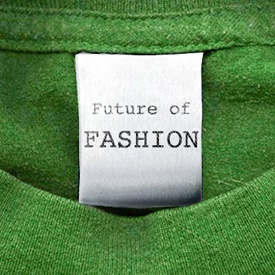With each new year, come new resolutions, some of which we carry through the entire 52 weeks, and others which are left abandoned as soon as we say goodbye to January. This year, I have only made one: in 2020, I will no longer be buying products from companies that are built on and endorse fast fashion. Allow me to explain.
For a long time now, I have been wanting to reinvent my closet, pondering convenient and cost-efficient ways to do so. Of course, the first options that came to mind were the standard chain clothing stores with student-friendly prices: H&M, Primark, Zara… The list goes on for what’s probably far too long.
Each of these brands belongs to a branch of clothing production known as “fast-fashion”, which ensures the fast movement of clothing and accessories from catwalks to retail stores, usually through cheap production and fast rotation of products. All the stores I’ve named above, and many more, are a part of this industry, and in 2020, I have decided not to contribute to the existence of these retailers any longer.
You may wonder what difference one 21 year-old woman no longer shopping at H&M will make. Honestly, it won’t make much of a direct difference, but knowing that my already limited student budget will not be contributing to the unethical and environmentally damaging practices of fast-fashion retailers is enough motivation for me.
While the practices of recycling, using metal straws and reusable coffee cups are receiving a widespread media platform for contributing to an environmentally friendly mindset, fast fashion, one of the biggest contributors to pollution is seldom spoken about in this context. The low quality of fast fashion items and the speed with which they move from rack to closet and from closet to bin causes immense amounts of pollution. In fact, the only polluter greater than fast fashion, and spoken about on a much larger scale, is oil.
Aside from its negative environmental impacts, the production of fast fashion items is also highly unethical; because retailers of fast fashion strive to keep the costs of production down, it is extremely common for cheap, unsafe labour to be used, and production centres are often placed in countries with low environmental regulations, easing production while also increasing pollution.
I’m sure most people have seen images, or at least heard of the existence of sweatshops that utilise child labour and place all of their workers in extremely unhealthy and unsafe conditions, demanding them to work extremely long hours for extremely small pay. I hate to burst anyone’s bubble, but a sweatshop just like that is where your favourite H&M top was probably made.
There are many instances of terrifying statistics regarding pollution and dangerous labour when it comes to the production of fast fashion that I could place in this article for a stronger shock value, but that’s not what I want this piece to be. Shock-value tends to be temporary, and rarely leads to a change of mindset, and that’s what I’m striving for.
Living in a city like Leeds is a great starting point for this resolution: with the immense amount of thrift stores available, most of which contribute to charity with the profits from their sales, Leeds provides a perfect base for starting a life without fast fashion. With the second-hand nature of thrift stores, you may wonder, “What if I thrift something that originally came from a fast fashion retailer?” The answer is that it doesn’t actually matter. Your money won’t be contributing to the industry or any of its practices, and will instead go towards a charitable organisation supported by the shop you choose to buy from. The decision to recycle your clothes once you can no longer use them, and therefore not contributing to the damaging waste that fast fashion produces, completes the individual cycle of reducing fast fashion damage.
I, for one, am looking forward to carrying this resolution on through this year, and hopefully many more to come, and coming up with creative ways to fill my closet with items I love without contributing to this damaging industry. I am hoping to explore the use of items I maybe wouldn’t have worn otherwise, hone my sewing and alteration skills through customising pieces I find, and knowing that I am doing one more thing to contribute the attempts at rehabilitating our damaged environments. It’s bound to be an interesting journey, and I truly hope that you, reading this, will consider joining me on it.
For more information on fast fashion, its labour practices and its effects on the environment, visit https://7billionfor7seas.com/fast-fashion-facts/ .
Sara Fabek Zovko

